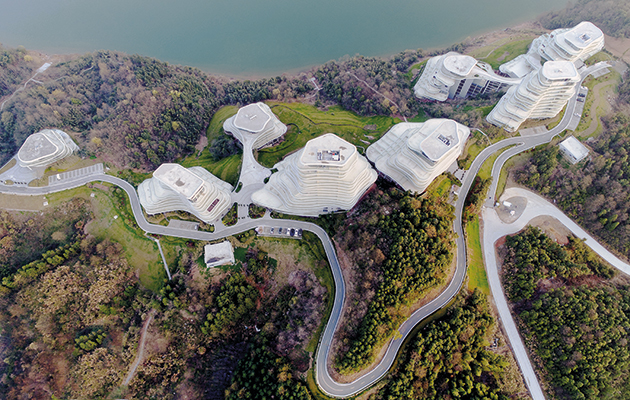|
In our latest issue, we take an exclusive look at Ma Yansong’s Huangshan Mountain Village, interview SANAA’s Ryue Nishizawa, consider the future of human labour and meet the Italian designers reviving traditional craft How should architecture meet the challenge of context? In the 21st century we build at breakneck speed and technology allows for breathtaking forms, but how often do the builders of spectacular buildings address urbanistic concerns? Ma Yansong, founder of Beijing-based Mad Architects, sets out how his country should deal with rapacious modernising forces in his manifesto, Shanshui City. It is a poetic, persuasive vision referencing traditional Chinese art and landscape. Ma is in a privileged position. As head of an internationally renowned practice with an impressive roster of clients, he is able to realise his ideas. This month we visit two projects attuned to Ma’s notions of Shanshui. The word translates literally as ‘mountains and water’, and describes the setting for the practice’s recently completed Huangshan Mountain Village, our cover story this month. On the surface the project, a gated-community of second homes aimed at China’s wealthy elite, does not sound too promising. However, our writer discovered in its fluid, tiered form that recalls stepped rice fields, a building working in harmony with the landscape. In contrast, Chaoyang Park Plaza sits in the heart of Beijing, but presents an equally sinuous form. It is in the execution where the dream can falter, but how much responsibility lies with the architect for the compromises the real world foists upon their design? Should architects like Ma lower their sights? As the story says, ‘the fall is always harder when starting from a greater height’. One thing is clear: China, a victim in some ways of its own hyper-leap into the 21st century, probably needs to think harder about how it approaches architecture. Mad’s projects are striking, yes, but thoughtful. Maybe it is too late to tame the advance of anonymous global starchitecture, but Ma has fashioned a plausible response. |
Words James McLachlan
On the cover Mad Architects’ Huangshan Mountain Village. Photo by Moises Levy |
|
|
|
||
|
IN THIS ISSUE FRONT Scene Last month’s most interesting architecture and design stories, ghosts included Milan launches A round-up of releases that tickled our design fancy at the famed furniture fair Clerkenwell Design Week Preview of London’s favourite spring design show Diary London Festival of Architecture and other things to see in June Crimes against design The alt-design of Portuguese luxury furniture Opinion The Holocaust Memorial shortlist reveals a profession lacking wordsmiths
DESIGN Italian new wave A young cohort of designers embraces the country’s classical heritage Emerging studio Barcelona’s Victor Castanera carefully balances art and technology Insta-design How our new visual culture elevates the image of design, sidestepping the real thing Future of the car A revolution in automobile design is on the horizon Icon of the month The deadliest design ever marketed from Clerkenwell: the Maxim Gun Q&A: Michael Anastassiades London’s lighting luminary on succeeding in the design world
ARCHITECTURE The end of work What will become of cities in the face of automation, asks Eddie Blake? Mipim At the Cannes property show, architecture takes a back seat Bricks, but not mortar Rediscovering the joys of play with the Lego Creator series It’s a Mad world China’s ambitious practice builds two ‘Shanshui’ cities Snøhetta goes Stone Age Architecture raises the fascimile question in Lascaux Icon of the month The changing face of Fabric, London’s legendary superclub Q&A: Ryue Nishizawa On deeply embedded Japanese sensibilities REVIEW Review: The Japanese House Triumph at the Barbican, despite a few hiccups Review: Imagine Moscow and Revolution – Russian Art 1917–1932 Tim Abrahams on the importance of recapturing the revolutionary spirit Review: Age of Spectacle Tom Dyckhoff’s guide to contemporary London Rethink: Cricket How to make the sport more appealing to everyone else Obsession: Blade Runner A dystopian future, meticulously depicted |
||



















